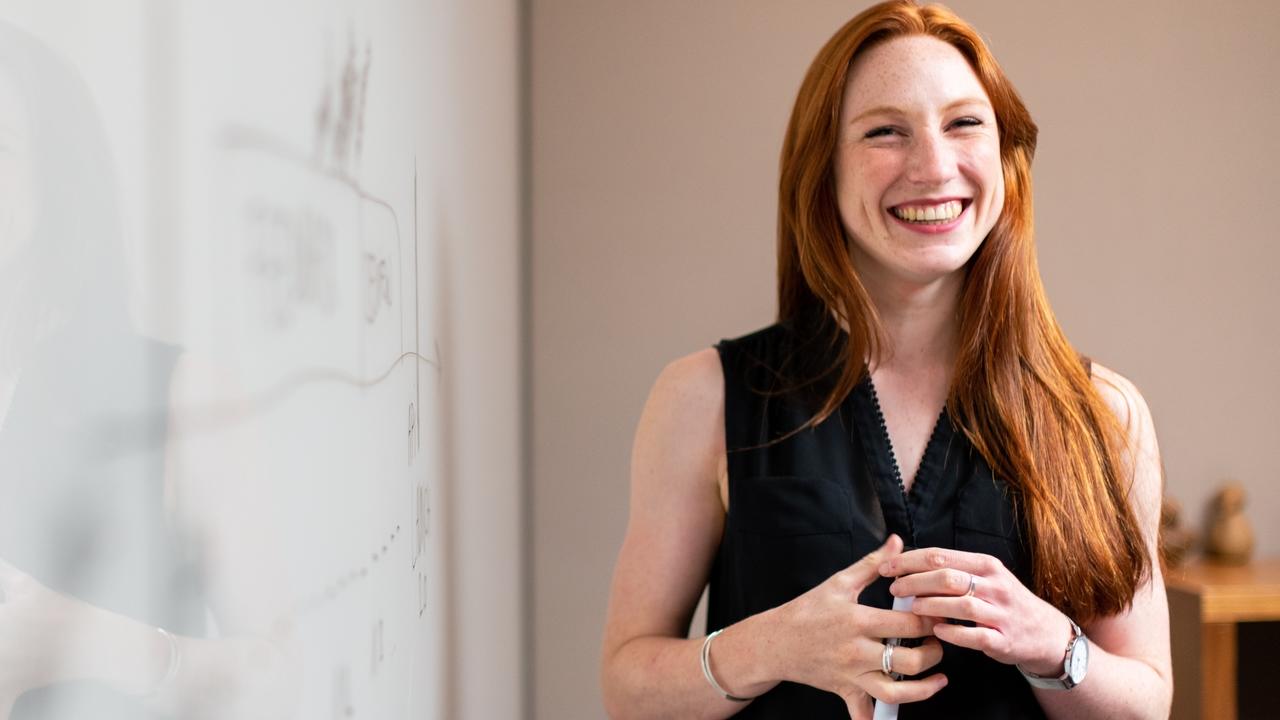Vulnerable Grace: Give It Your Best, Even When You Are at Your Worst
Dec 03, 2020
Leading with vulnerability means letting go of the perception that you have to lead with perfection. Becoming comfortable in your imperfection and talking about it with others is an opportunity to establish authentic relationships, rather than those built with a Facebook filter that only shows the good, and none of the bad.
There is a huge lie in leadership. The lie: You need to lead like an expert. Some people lead like they believe they know what they are talking about, while their audience knows they know nothing about the topic. They know a little about a lot but talk like they have a Ph.D. in everything.
In order to rise, you have to lay your burden down.
— Sally Helgesen and Marshall Goldsmith, authors of How Women Rise
Watch these leaders try to lead a meeting. They start out strong, saying the right words and quoting the right people. But in the follow-up, they lose their ground. When asked to explain a tool or a strategy they just brought up, they say things like, “Well, in my reading, this is what it says” or “Well, (name) told me it is like this.” If you can, watch the audience react and respond to this type of leader.
Around this time, their heads go down, they engage in sidebar conversations, or worse yet, they check out and retreat into their own narrative and start mentally preparing to leave. We all have experienced this type of leadership, and many of us have tried to lead in this manner as well.
In her book Lead With Grace, school leader, author, and keynote speaker Jessica Cabeen provides frames that will empower anyone–teacher, principal, parent, or superintendent–to lead with grace. Throughout this book, you’ll read stories and strategies that will allow you to walk away with key practices and exercises that will build confidence so you can extend grace with others.
Own Your Novice Status
Instead of focusing so much on how we must be perfect, let’s start figuring out how to be present. When you enter the classroom, office, or any other space, be willing to own your mistakes, and be honest about what you know and what you don’t.
- Try something new. Don’t forget that we were all students before we were what we are now. If we’re being honest, we’re still all students of something! Take a learner’s mindset when leading with vulnerability. Sub in a class outside your content comfort zone, implement a new strategy in the classroom, and play a game with your students. Tackling and taking risks regularly shows others and yourself that leading and learning go hand in hand.
- Don’t reinvent the wheel. Many times, you can find great ideas right around the corner in another classroom or nearby school. And you can learn something in the process. Is another school or classroom doing a cool project? Don’t try to outdo their idea; instead, ask if you can use it. Leading like a newbie gives you opportunities to ask others for help and ideas, and has the added benefit of getting you involved with others and building your personal network.
- Laugh about it. Seriously, don’t take yourself so seriously. One way of owning your mistakes is to laugh about them and learn from them. Allow yourself to be human, and you will model for students and staff that it is okay for them to try, regardless of whether they succeed or fail.
- Learn from it. It is okay to try something . . . and then never, ever do it again. In the past year, I have tried great activities and initiatives that we will do again next year. We had about the same number of activities that failed miserably! Mistakes are great ways to build background knowledge for future experiences.
Be Honest and Ask for Opinions and Help
This is not the time, place, or space to try to fake it until you make it. Owning your inexperience and asking for help early on will help you grow, and help your team go further sooner than if you had tried to fake your way through the situation. So how do you go about finding the right team and feedback?
- Find a tribe. Developing vulnerability in leadership takes time and people who you trust, respect, and admire. Who is that student, parent, or teacher that will help you stay accountable to yourself and point out areas of growth? Surround yourself with people who represent the different stakeholders you serve. Ask for their opinions, and then listen to them.
- Be specific. When asking for help, be detailed about what type of feedback you are looking for from the other person. Are you worried you are not being clear? Concerned that the message is getting lost? Or are you a little on the long-winded side? When you want feedback, be specific about what you are looking for so the other person can look for exactly what you need.
- Be grateful. Nothing means more in this work than incorporating sincere manners and social graces. Circle back and thank the other person for their feedback. The more you ask for help and for others’ time and advice, the more you grow and get support in return, but make sure you’re being appropriately thankful for the help. A phone call, a PM, a thank-you card, a coffee meeting . . . the possibilities are endless, and each one will help you deepen the relationship—and ensure that you can go to that person for help again in the future!
Stop Hiding, Start Looking
Vulnerable grace is a way to be your best self, whether or not you have a good hair day or are unsure about your outfit. The more we hide who we are, the less we allow others to learn and lead with the real us. Having these honest conversations builds the soft skills necessary to lead through the tough waters.
- Ask for feedback. Be specific. When entering a meeting, ask a person who is not directly involved to observe your specific concerns and share what they heard/saw afterward. Take the feedback on board and learn from it. Every time.
- Record yourself. With permission, record yourself at a staff meeting. Alternatively, even record yourself practicing what you are going to say in an upcoming difficult conversation. Watch it and look for facial tics and inflections in your voice, and tweak your delivery before you share it in real time. Stop the instant replay in your head of what you think you look like in the mirror, and start to focus on the real picture in front of you—the one that you can see.
- Get rid of the mirror. Make sure your idea of yourself is a true picture of what others see. Stop being self-deprecating and doubting your ideas and dreams because others might not like them, or might not agree with you. Too often, we make assumptions about what others think of us. We discount our dreams or refuse to tell others about them because we assume they’ll downplay us. Don’t let your narrative of who you think you are drown out what others actually see and say about you.
Final Takeaway
Becoming a leader who builds the vulnerability muscle also means we decrease the use of shame in our thoughts. Stop personalizing mistakes as fatal flaws, and start treating them as learning opportunities. Balance out the awkwardness of the apology with the possibility of strengthening relationships and communication skills.
Take away the thoughts about fatal flaws and replace them with intentions to learn and lead as an imperfect person willing to learn and grow every day. Grace and vulnerability in leadership mean making mistakes, owning them, and learning from them moving forward.







